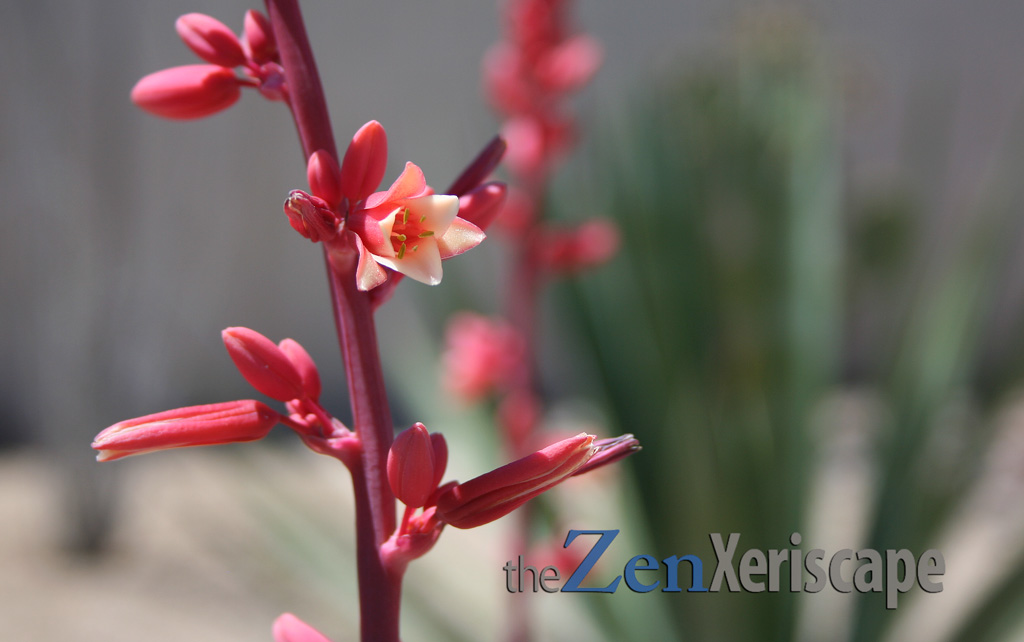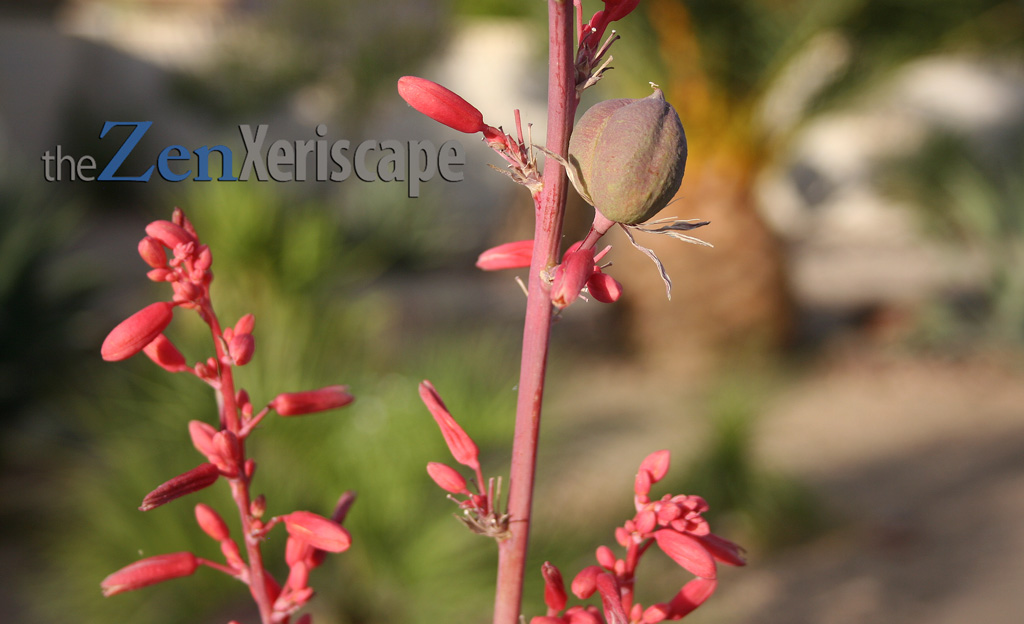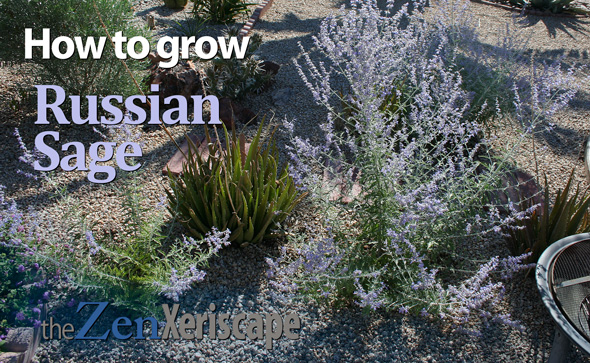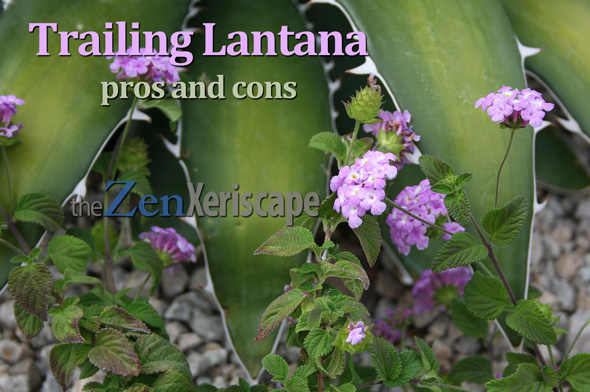The Red Yucca (Hesperaloe parviflora ) was one of the first plants that caught my eye when I moved to the southwestern United States. The almost fluorescent pinkish-red flowers and the long stalks made me look twice. And I noticed that the hummingbirds loved them, too. As an arid gardener, you should consider adding the Red Yucca. Here are the Red Yucca pros and cons!

But, is the red yucca a good fit for your landscape?
Before you decide, read about the red yucca pros and cons.
Photo by Doug Martin
Their ability to grow in poor soil and with little protection from the hot southern sun makes the red yucca a perfect consideration for your drought-tolerant landscape.
What is the red yucca?
Despite its name, the red yucca (Hesperaloe parviflora ) isn’t really a yucca. Like its genus name indicates, the red yucca is is part of the aloe family of plants.
I’m familiar with aloes, because they are one of the few houseplants that I can grow successfully. They, too, survive on very little water and very little attention.
The red yucca forms a clump of long, arcing leaves forming around a rosette clump. As the plant ages, the clump increases in size as more new leaves grow.
New pups appear close by and form their own clumps all around the base. It’s possible to divide those clumps into new, separate plants, just as you would with a Russian sage or hosta.
And best of all, this plant produces a stunning, pinkish-red stalk with similar-colored flowers.

stunning flowers and flower stalk
from the red yucca plant.
Photo by Doug Martin
The red yucca is a native of the Chihuahuan Desert in Texas, southern New Mexico, and northern Mexico. So, it is used to the heat, it is used to the cold, and it thrives with only a little water!
But, is the red yucca something you should consider for your drought-tolerant landscape? Let’s look at the red yucca pros and cons to find out!
Red yucca pros and cons
PROS:
Cold and hot tolerant
The red yucca survive temperatures down to -20 degrees F! That’s very low! But as if that’s not enough, this tough plant can thrive in temperatures 120 degrees F, and maybe even higher than that.
This plant did well in my xeriscape in the high-altitudes of southern New Mexico, and thrives in my landscape in low-altitude southern Arizona.
The red yucca is so versatile that it can survive in USDA hardiness zones from 5-11, but it must be grown in a region that receives low amounts of rainfall.
Drought-tolerant
This plant can only be grown in regions that receive very little rainfall. Examples would include the southwestern United States, or other arid regions of the world.
That characteristic makes it perfect for a low-water-use landscape, rock garden, or even as a potted plant.
Flower stalk and flowers are stunning
Normally, I wouldn’t describe a flower stalk as being eye-catching, but it is. In fact, the flower stalk has the same fluorescent pinkish-red hue that the flowers have.
And then the flowers themselves are like a work of art! They are beautiful, and attract hummingbirds and other pollinators.

On the stalk, the plant produces small, vibrantly colored flowers.
Photo by Doug Martin
And unlike many cactus plant flowers, the red yucca flowers can bloom for a few weeks. After blooming and wilting, the plant produces seed pods that also look attractive.
Inside the seed pods are many seeds. As the seed pod dries, the seeds become black. Eventually, the pods split open and can fling their seeds in all directions.

As the seed pod dries, the seeds inside turn black and also dry.
Eventually, the dry seed pod can snap open
and fling the seeds in all directions.
Photo by Doug Martin
Extremely easy and hardy xeriscape plant
The tough red yucca is an extremely tough xeriscape plant, and one that everyone should consider for their landscape. It’s easy to grow, and requires very little maintenance.
Red yucca pros and cons
CONS:
The red yucca is susceptible to rot
Yes, this plant is very sensitive to over-watering. It can quickly begin to rot.
Therefore, it must be planted in a location in your landscape that drains well. In addition, any caliche soil should be amended with sand to help drain water away from the plant.
I have made the mistake of over-watering a lovely red yucca that seemed to be in good health. It was growing too slowly for me, so I thought that just a little extra water would speed up its growth rate.
Well, my strategy did work initially—the plant did grow a little faster (I think). Unfortunately, the plant started to rot, and by the time I noticed, it was too late to salvage. So the lesson is, don’t over-water the red yucca!
Without the flowers, the red yucca looks boring
I think the red yucca looks boring all by itself, especially without its stunning flowers and flower stalk. The leaves are not very dramatic-looking, like many agaves and other xeriscape plants can be.
For that reason, I think this plant should be grouped with other more dramatic-looking plants.
Some examples might be to place this plant in a grouping of ornamental grasses, or drought-tolerant bushes, like the butterfly bush or the native brittlebush. Even a Russian sage would work, as long as you don’t give it too much water.
Always use caution, though, and be sure the companion plants you select require very little extra water.
Or for even more drama, place your red yucca next to a columnar cactus.
May take two to three years before it flowers
The red yucca might take up to three years before it flowers. So, be patient and dream of the future. Soon, those fabulous red yucca flower stalks and flowers could become a reality in your xeriscape!
Explore Prime options and benefits! (As an Amazon Associate, I earn a commission from qualifying purchases.)
TAKEAWAYS
Red yucca pros and cons
The red yucca is a tough, easy-to-grow xeriscape plant. It will work well in a rock garden, or grouped with other equally drought-tolerant plants.
The red yucca is susceptible to rot, so do not over-water, and be sure that the soil drains well. If in doubt, amend your soil with sand to enhance its drainability.
Above all, celebrate the beautiful colors that the red yucca will bring to your xeriscape! The hummingbirds will thank you, and so will your neighbors.
Photos and content by Doug Martin and The Zen Xeriscape



